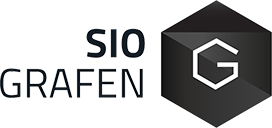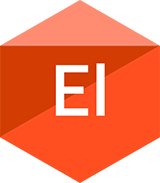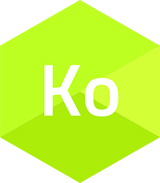GNOME ACA
Syfte och mål
Denna genomförbarhetsstudie syftade till belägga expanderbara polymerpartiklar med grafen och att använda dessa i anisotropt ledande adhesiv (ACA) i syfte att skapa metallfria ledande adhesiv och stabila kontakter mot grafenelektroder. Målet var att:
- framställa grafenbelagda expanderabara polymerpartiklar för ACA, med verifierad kontaktresistans
- öka kunskapen om grafen hos de deltagande företagen – om hur ytor på polymersfärer kan beläggas med grafen, för utveckling av kontakter mot och med grafen
För att realisera praktiskt tillverkningsbara dosimetervolymer, med hög antalsdensitet av strålningssensorer och minimal sekundärstrålning från metallelement, behövs metallfria adhesiv för flip-chip bonding komponenter. Det finns en stor potential och en konkret efterfrågan på lösningar för att skapa god kontakt mot grafenelektroder. Vid sidan av detta finns en stor potential för metallfria ledande häftämnen.
Planerat upplägg och genomförande
Projektets huvudutmaning var att belägga polymersfärer med grafen så att dessa får en ledningsförmåga och att denna ledningsförmåga bibehålls då sfärerna expanderar. En annan stor utmaning var att skapa god och stabil kontakt mellan grafitbelagda partiklar och elektrodmaterial. Modifiering av elektrodytor för att åstadkomma god och stabil kontakt kan behöva utföras i projektet.
Resultat
- Elektriskt ledande partiklar i form av grafenbelagda polymerpartiklar har utvecklats. Dessa kan blandas in i lim för att åstadkomma elektriskt ledande lim. Detta resultat kan leda till att montering av strålningssensorer med flip-chip teknik med ett metallfritt anisotropt ledande lim är möjligt. Detta kan i sin tur ha effekten att kretskort med en hög antalsdensitet av sensorer kan realiseras med tillverkningsmetoder som är skalbara och ekonomiskt realistiska. I projektet utvecklades en metod att med en skalbar våtkemisk metod belägga polymerpartiklar med grafen. Beläggningen gör att kompositer baserade på partiklarna blir elektriskt ledande. Det är möjligt att framställa anisotropt ledande material baserade på grafenbelagda polymerpartiklar framställda med metoden.
- Beläggningen har visat sig ha begränsad mekanisk hållfasthet och begränsad vidhäftning mot polymerpartiklarna. Detta skapar problem då partiklarna ingår i högviskösa adhesiv som utsätts för skjuvning. I elektriskt ledande lättviktskompositer, är mekaniska egenskaper, adhesiv och kohesiv styrka viktiga. Således är det nödvändigt att förbättra grafenbeläggningens mekaniska styrka och vidhäftning.
- Målet var ett anisotropiskt ledande lim. Isotropiskt ledande lim erhölls, anisotropin behöver vidare utvecklas genom bättre mekanisk sturka i beläggningen.
- Vissa kvalitativa aspekter av grafenbelagda partiklar och adhesiv baserade på dessa behöver vidare utveckling för full nytta. Vidare utveckling och karaktärisering bedöms nödvändiga för att skapa ett tillverkningsdugligt metallfritt ACA baserat på grafenbelagda polymerpartiklar.
- Begränsad mekanisk hållfasthet och vidhäftning mot polymerpartiklarna skapar problem då partiklarna ingår i högviskösa adhesiv som utsätts för skjuvning. I elektriskt ledande lättviktskompositer, är mekaniska egenskaper, adhesiv och kohesiv styrka viktiga. Därför är det nödvändigt att förbättra grafenbeläggningens mekaniska styrka och vidhäftning.
- En metod för att skapa en grafenbeläggning på polymerpartiklar har utvecklats. Partiklarna är elektriskt ledande och kan blandas med en häftämneskomposition för att skapa att anisotropt ledande materia
Den viktigaste insikten är att grafenbeläggningens mekaniska egenskaper bör förbättras. ACA behöver karakteriseras noggrannare. Kontaktytor mellan ACA partiklar och elektroder behöver karaktäriseras och eventuellt förbättras. Grafenbelagda partiklars ledningsförmåga måste förbättras.
Framtidsutsikter
- Med högre ledningsförmåga och utvidgad karaktärisering kan möjligheterna för grafenbelagda partiklar och kompositioner, samt kompositer baserade på dessa, finna många användningsområden och materialen bli mer värdefulla. Inom 24-36 månader är rimligt att anta ett möjligt införande i målapplikationen.
Behov av framtida partner/expertis
- Kompetens inom automatisk montering av mikroelektronik är nödvändig för att finna tillräckliga egenskaper och begränsningar.
Abstract in English Gnome ACA
This feasibility study aimed to coat expandable polymer particles with graphene and to use them in anisotropic conductive adhesive (ACA) to create metal-free conductive adhesives and stable contacts to graphene electrodes. The goal was to: 1) produce graphene-coated expandable polymer particles for ACA, with verified contact resistance 2) increase the knowledge of graphene of the participating companies - about how surfaces on polymer spheres can be coated with graphene, for the development of contacts against and with graphene.
To realize practically fabricable dosimeter volumes, with high number density of radiation sensors and minimal secondary radiation from metal elements, metal-free adhesives for flip-chip bonding components are needed. There is great potential and a concrete demand for solutions to create good contact with graphene electrodes. Besides this, there is a great potential for metal-free conductive adhesives.
Planned layout and implementation
The main challenge of the project was to coat polymer spheres with graphene so that they have a conductivity and that this conductivity is maintained when the spheres expand. Another great challenge was to create good and stable contact between graphite-coated particles and electrode material. Modification of electrode surfaces to achieve good and stable contact may need to be carried out in the project.
Electrically conductive particles in the form of graphene-coated polymer particles have been developed. These can be mixed into adhesives to provide electrically conductive adhesives. This result can lead to the installation of radiation sensors with flip-chip technology with a metal-free anisotropic conductive adhesive. This, in turn, can have the effect that circuit boards with a high number density of sensors can be realized with manufacturing methods that are scalable and economically realistic. In the project, a method was developed to coat polymer particles with graphene with a scalable wet chemical method. The coating makes composites based on the particles electrically conductive. It is possible to produce anisotropic conductive material based on graphene-coated polymer particles produced by the method.
Results
• The coating has been shown to have limited mechanical strength and limited adhesion to the polymer particles. This creates problems when the particles are contained in high viscosity adhesives that are subjected to shear. In electrically conductive lightweight composites, mechanical properties, adhesives and cohesive strengths are important. Thus, it is necessary to improve the mechanical strength and adhesion of the graphene coating.
• The target was an anisotropic conductive adhesive. Isotropic conductive adhesives were obtained, anisotropin also needs to be developed by better mechanical strength in the coating.
• Some qualitative aspects of graphene-coated particles and adhesives based on these need further development for full benefit. Further development and characterization are deemed necessary to create a manufacturing-free metal-free ACA based on graphene-coated polymer particles.
• Limited mechanical strength and adhesion to the polymer particles create problems when the particles are contained in high viscosity adhesives that are subjected to shear. In electrically conductive lightweight composites, mechanical properties, adhesives and cohesive strengths are important. Therefore, it is necessary to improve the mechanical strength and adhesion of the graphene coating.
• A method for creating a graphene coating on polymer particles has been developed. The particles are electrically conductive and can be mixed with an adhesive composition to create anisotropic conductive matter.
The most important insight is that the mechanical properties of the graphene coating should be improved. ACA needs to be more accurately characterized. Contact surfaces between ACA particles and electrodes need to be characterized and possibly improved. The conductivity of graphene particles must be improved.
Outlook
• With higher conductivity and extended characterization, the possibilities for graphene-coated particles and compositions, as well as composites based on these, can find many uses and the materials become more valuable. Within 24-36 months, it is reasonable to adopt a possible introduction in the target application.
Need for future partners / expertise
• Expertise in automatic mounting of microelectronics is necessary to find sufficient properties and limitations.





